أكسيل 2016 -
(Cell References) مراجع الخلايا النسبية والمطلقة

أكسيل 2016
(Cell References) مراجع الخلايا النسبية والمطلقة


/en/tr_ar-excel-2016/complex-formulas-/content/
There are two types of cell references: relative and absolute. Relative and absolute references behave differently when copied and filled to other cells. Relative references change when a formula is copied to another cell. Absolute references, on the other hand, remain constant no matter where they are copied.
اختياري: تحميل ملف للتمرين .
Watch the video below to learn more about cell references.
By default, all cell references are relative references. When copied across multiple cells, they change based on the relative position of rows and columns. For example, if you copy the formula =A1+B1 from row 1 to row 2, the formula will become =A2+B2. Relative references are especially convenient whenever you need to repeat the same calculation across multiple rows or columns.
In the following example, we want to create a formula that will multiply each item's price by the quantity. Instead of creating a new formula for each row, we can create a single formula in cell D2 and then copy it to the other rows. We'll use relative references so the formula calculates the total for each item correctly.
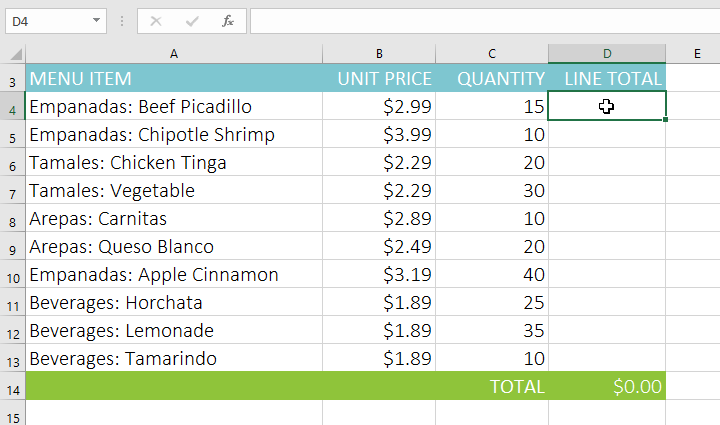
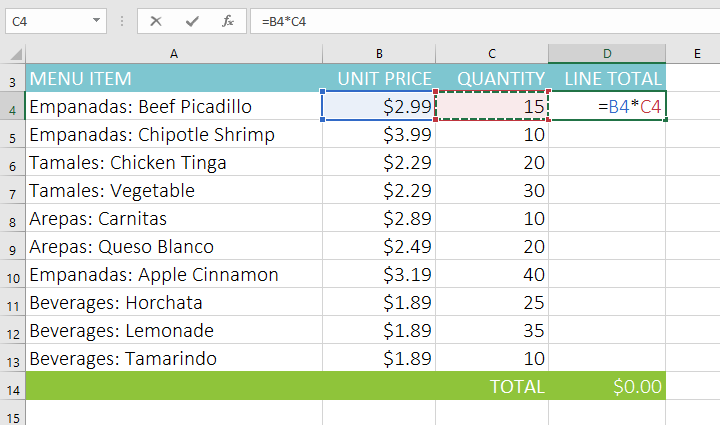
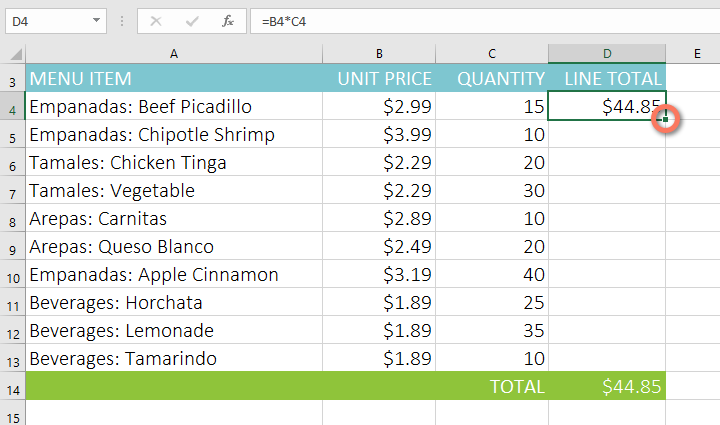
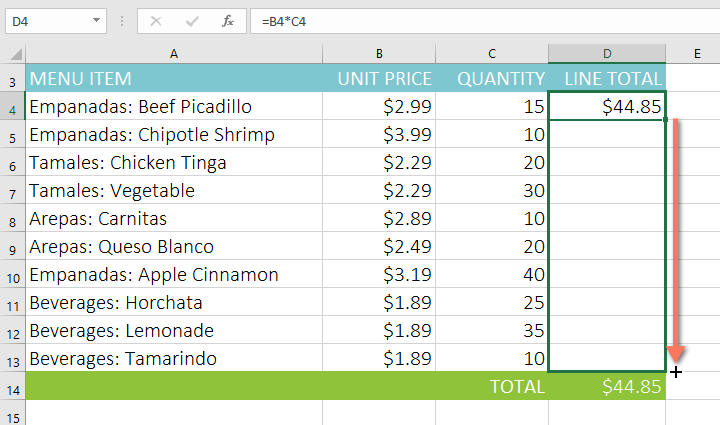
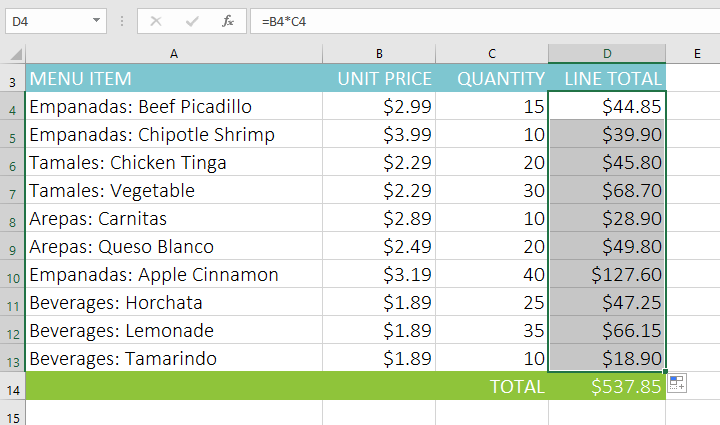
You can double-click the filled cells to check their formulas for accuracy. The relative cell references should be different for each cell, depending on their rows.
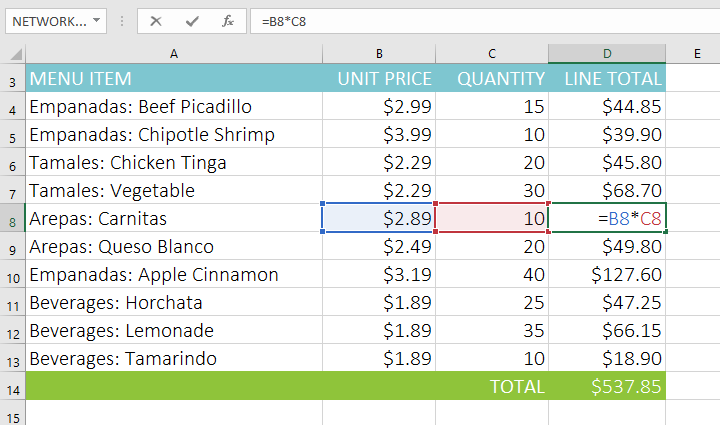
There may be a time when you don't want a cell reference to change when copied to other cells. Unlike relative references, absolute references do not change when copied or filled. You can use an absolute reference to keep a row and/or column constant.
An absolute reference is designated in a formula by the addition of a dollar sign ($). It can precede the column reference, the row reference, or both.

You will generally use the $A$2 format when creating formulas that contain absolute references. The other two formats are used much less frequently.
When writing a formula, you can press the F4 key on your keyboard to switch between relative and absolute cell references. This is an easy way to quickly insert an absolute reference.
In the example below, we're going to use cell E2 (which contains the tax rate at 7.5%) to calculate the sales tax for each item in column D. To make sure the reference to the tax rate stays constant, even when the formula is copied and filled to other cells, we'll need to make cell $E$2 an absolute reference.
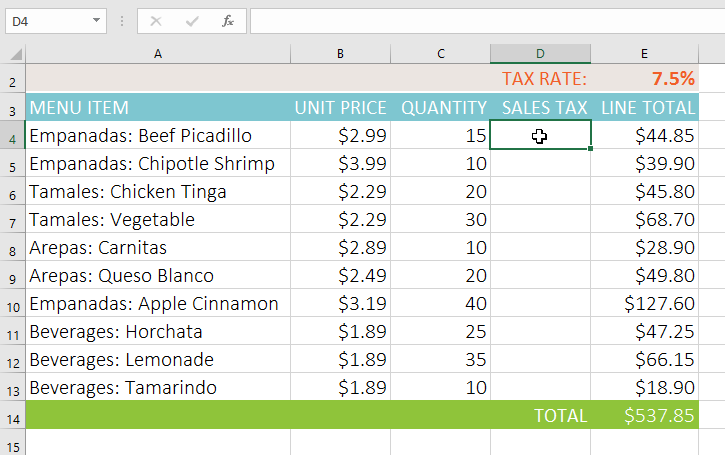
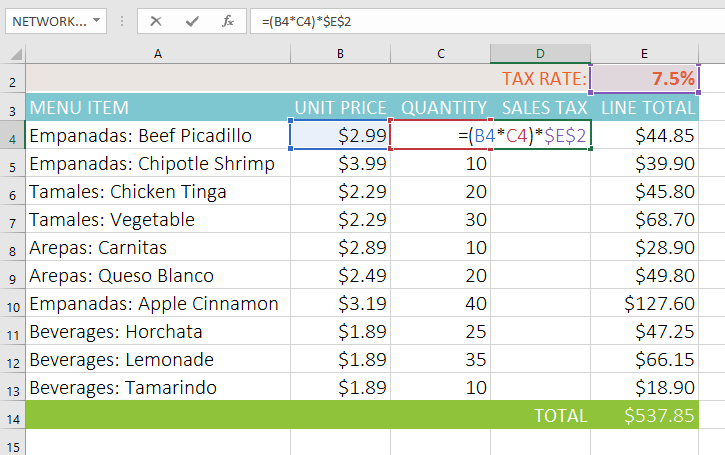
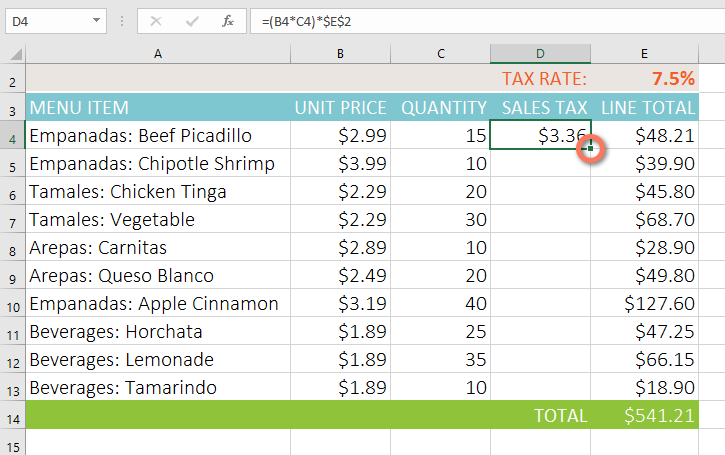
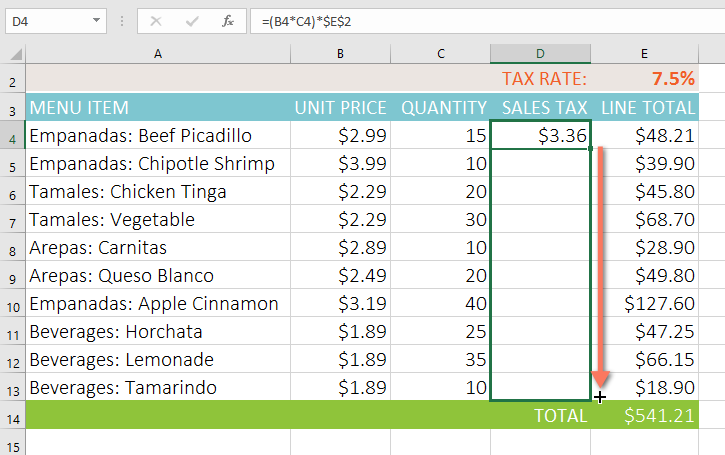
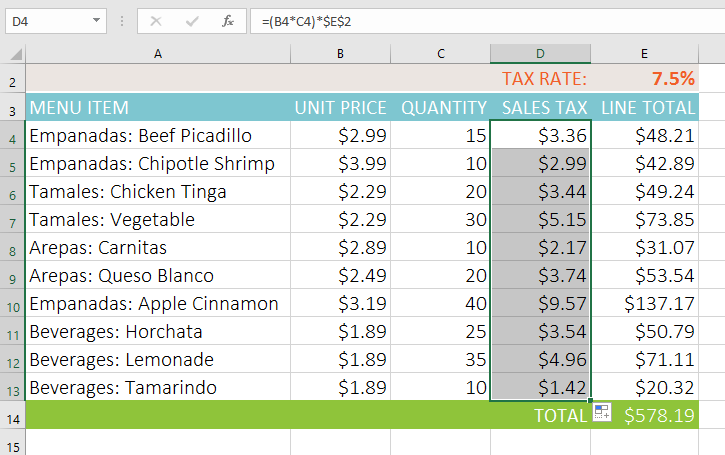
You can double-click the filled cells to check their formulas for accuracy. The absolute reference should be the same for each cell, while the other references are relative to the cell's row.
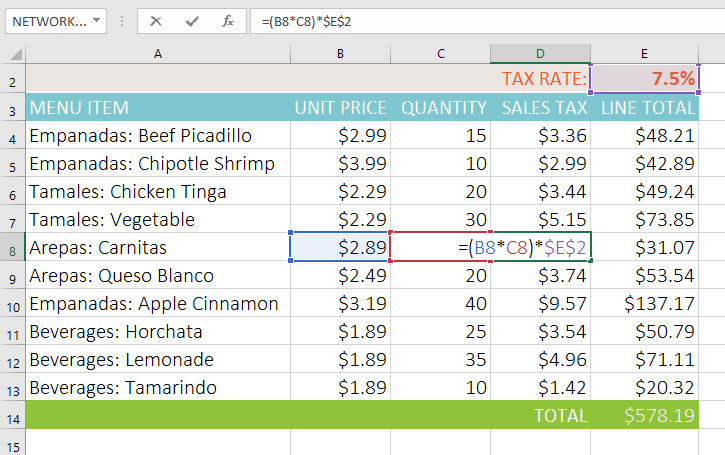
Be sure to include the dollar sign ($) whenever you're making an absolute reference across multiple cells. The dollar signs were omitted in the example below. This caused Excel to interpret it as a relative reference, producing an incorrect result when copied to other cells.
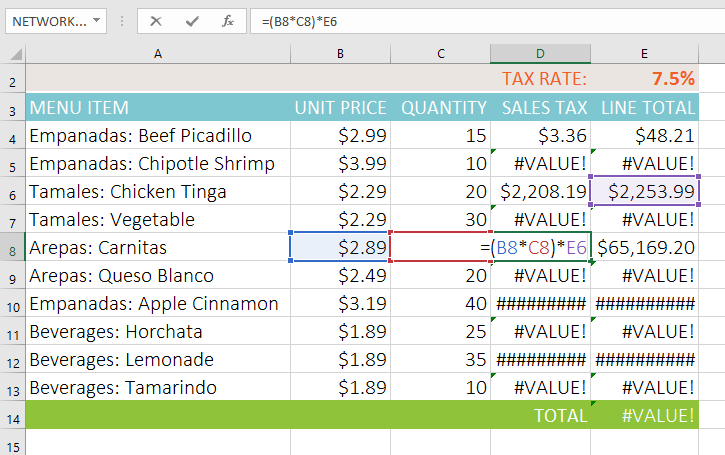
Excel allows you to refer to any cell on any worksheet, which can be especially helpful if you want to reference a specific value from one worksheet to another. To do this, you'll simply need to begin the cell reference with the worksheet name followed by an exclamation point (!). For example, if you wanted to reference cell A1 on Sheet1, its cell reference would be Sheet1!4 امبير
Note that if a worksheet name contains a space, you'll need to include single quotation marks (' ') around the name. For example, if you wanted to reference cell A1 on a worksheet named July Budget, its cell reference would be 'July Budget'!4 امبير
In our example below, we'll refer to a cell with a calculated value between two worksheets. This will allow us to use the exact same value on two different worksheets without rewriting the formula or copying data.

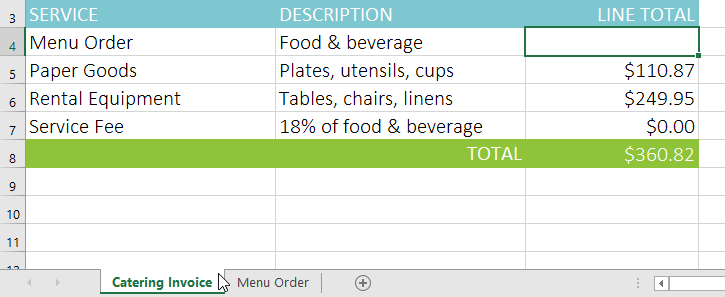

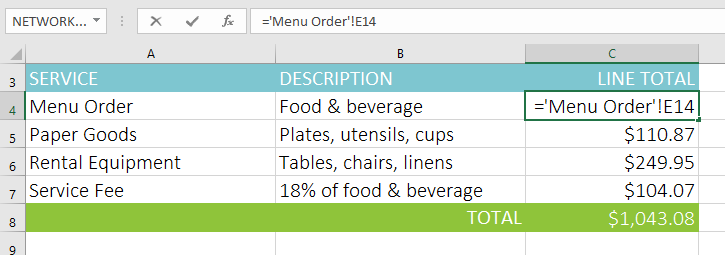
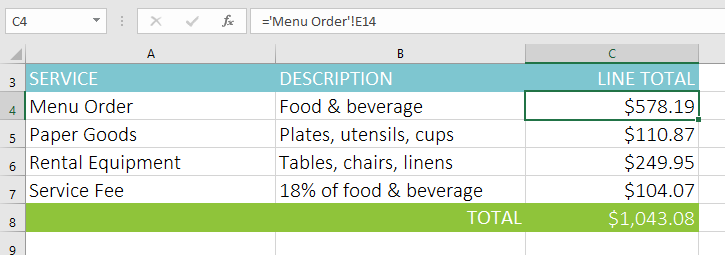
If you rename your worksheet at a later point, the cell reference will be updated automatically to reflect the new worksheet name.
If you enter a worksheet name incorrectly, the #REF! error will appear in the cell. In our example below, we've mistyped the name of the worksheet. To edit, ignore, or investigate the error, click the Error button beside the cell and choose an option from the menu.
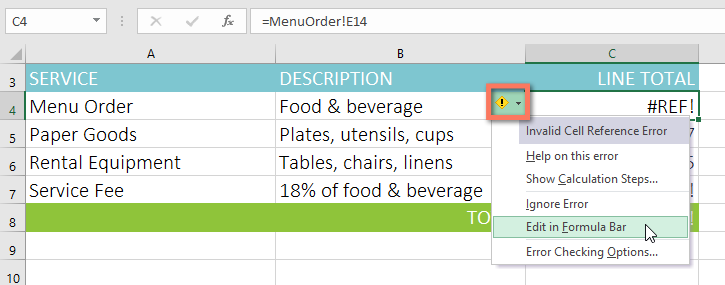
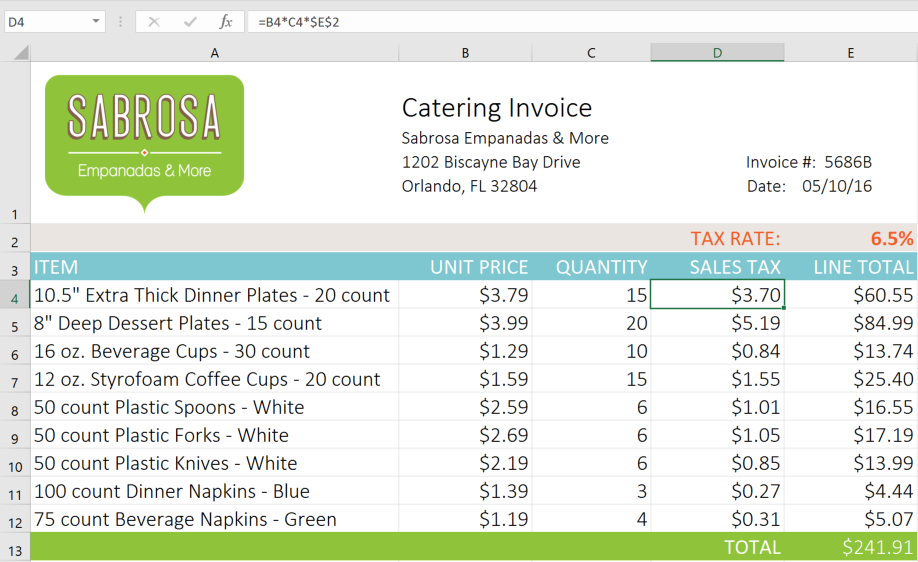
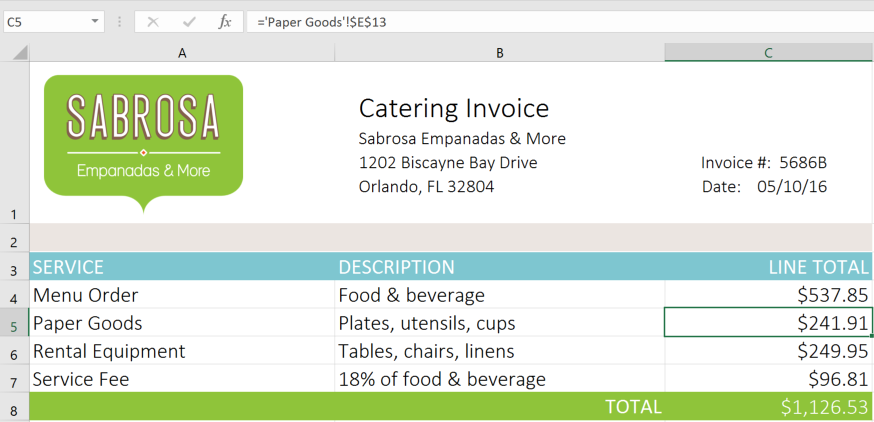
/en/tr_ar-excel-2016/functions-/content/